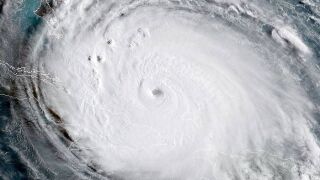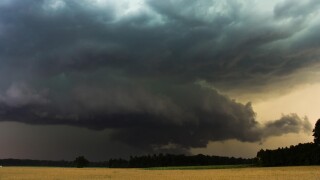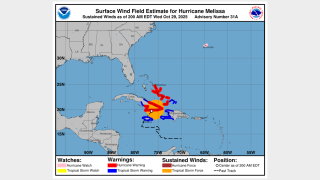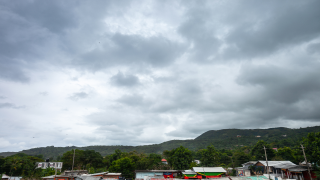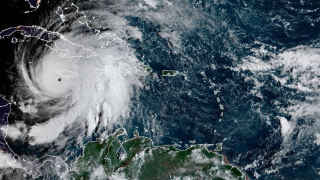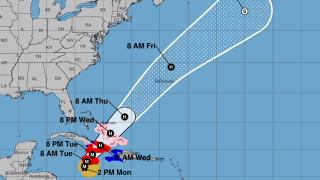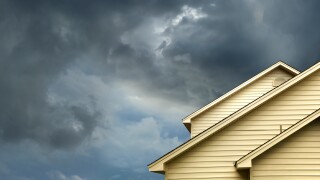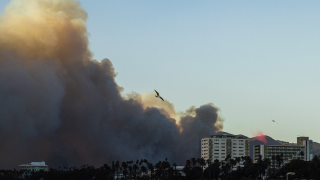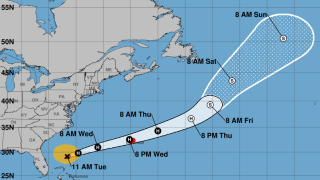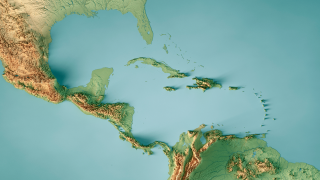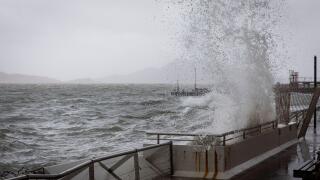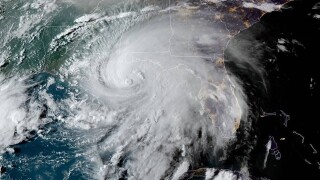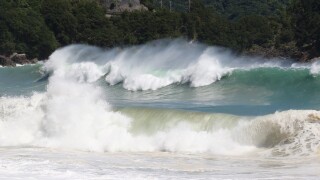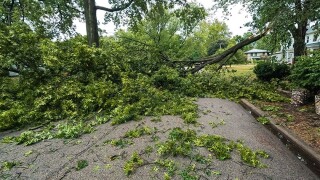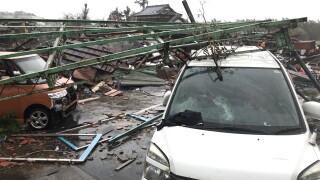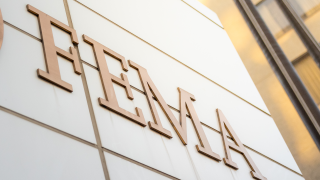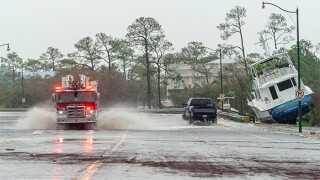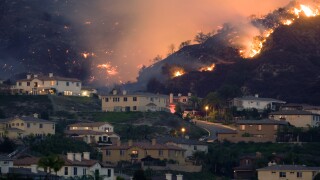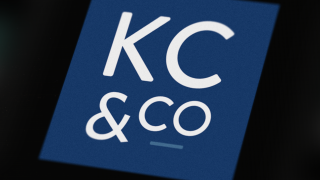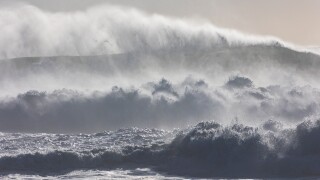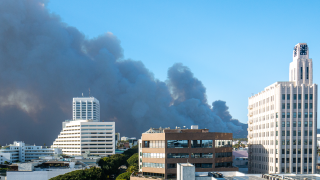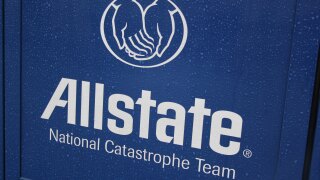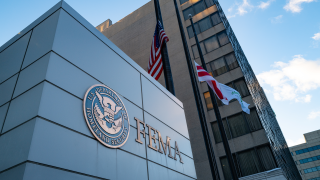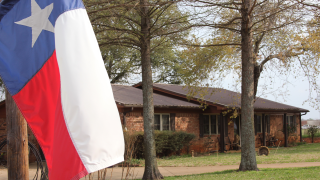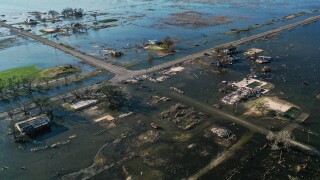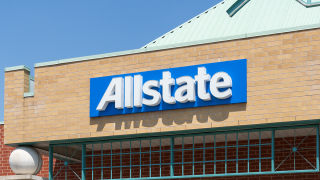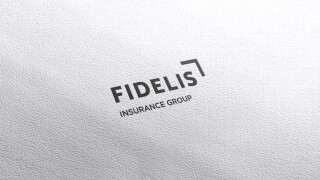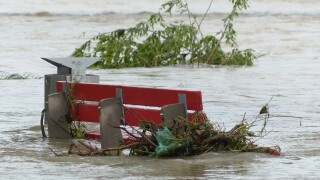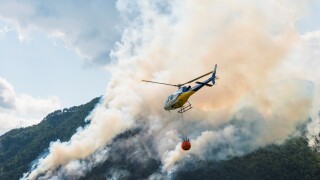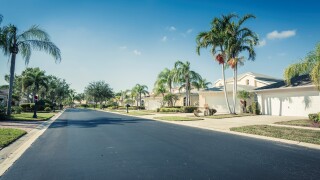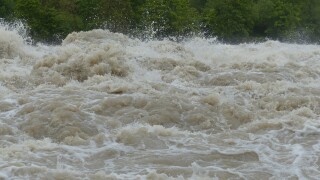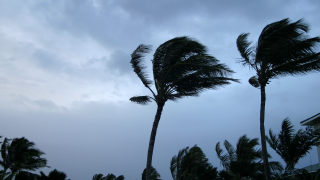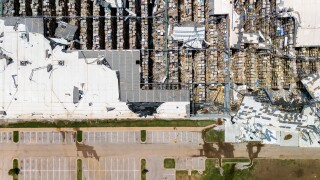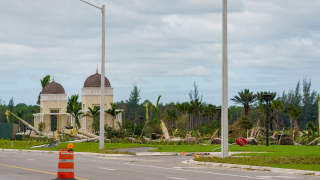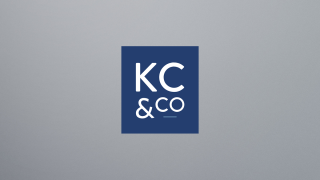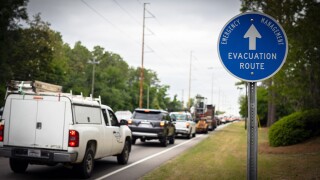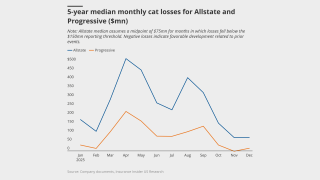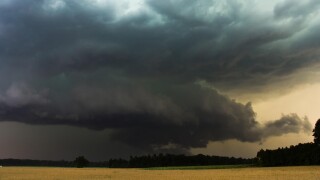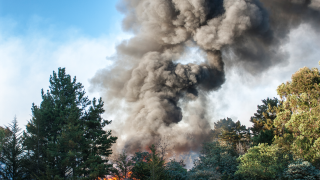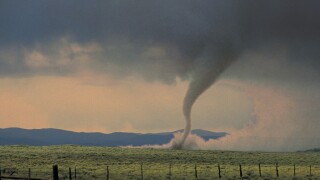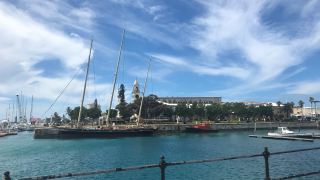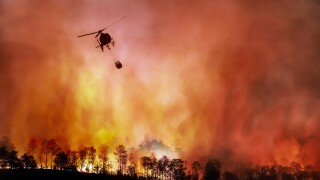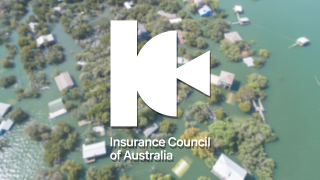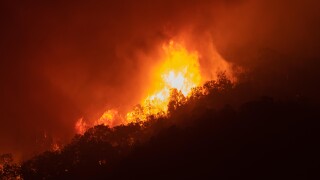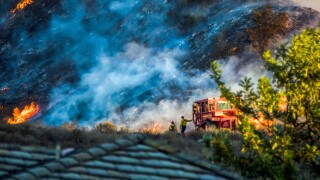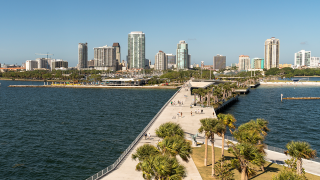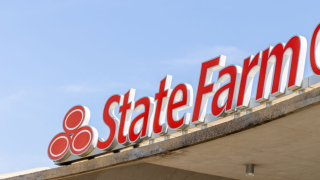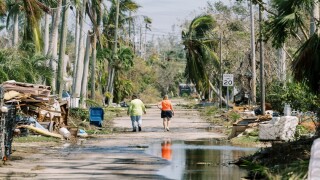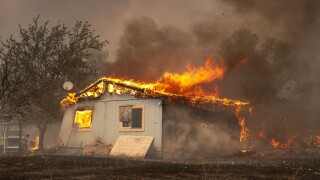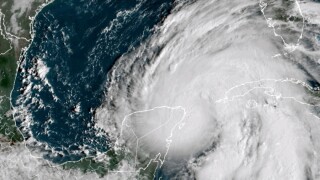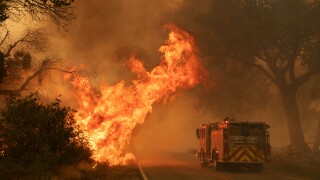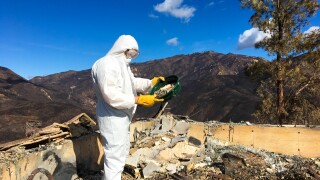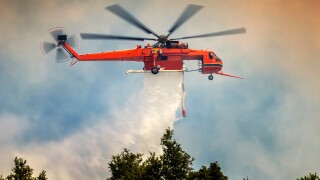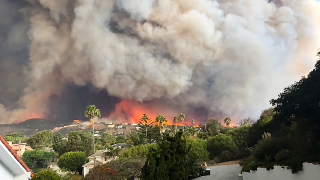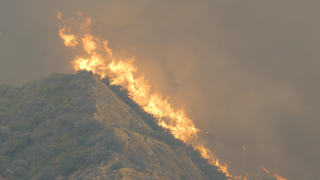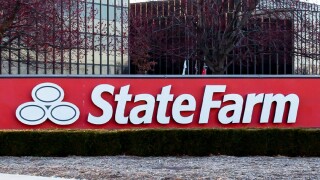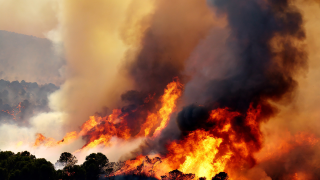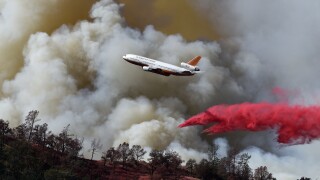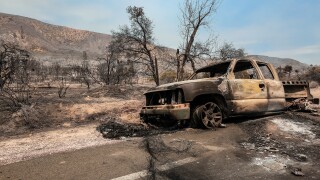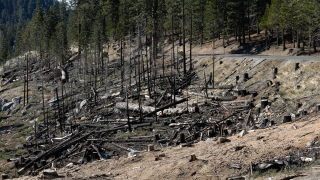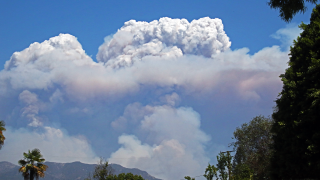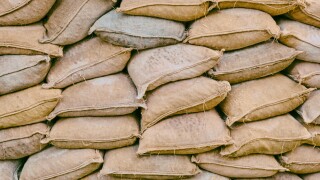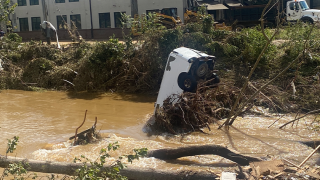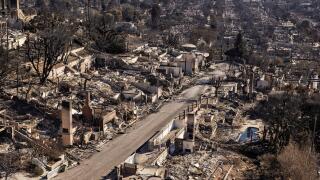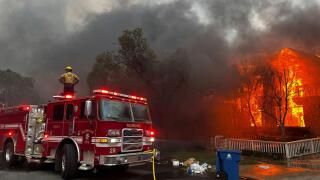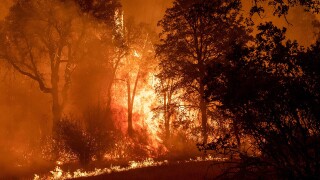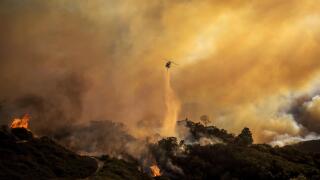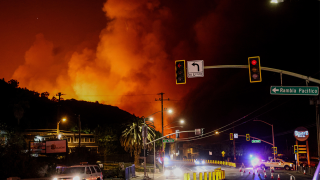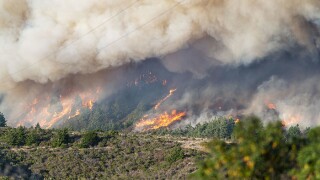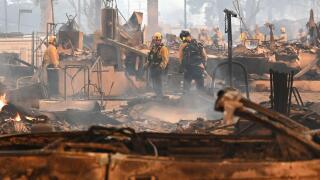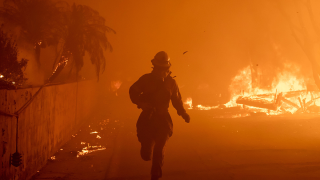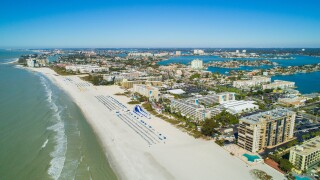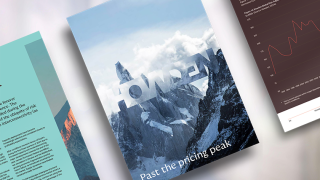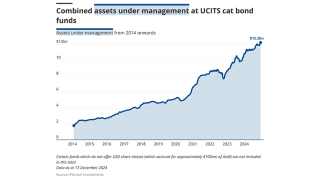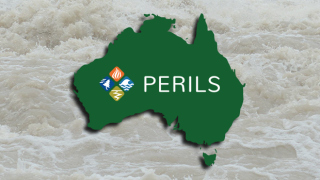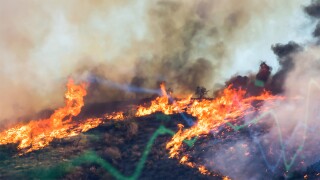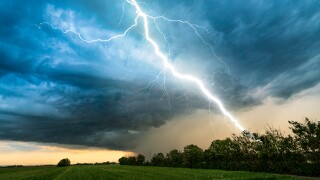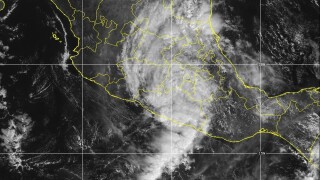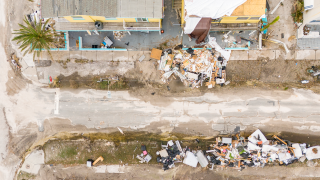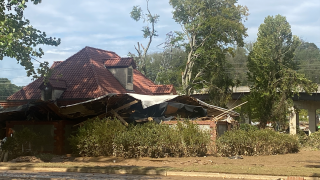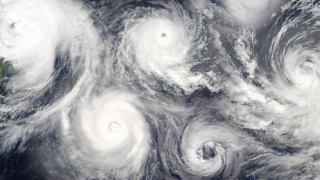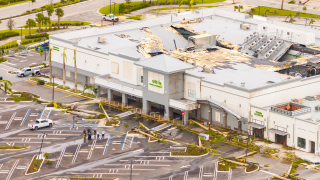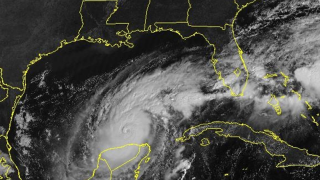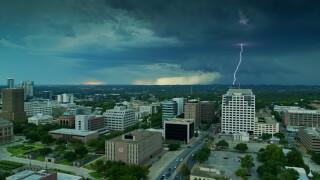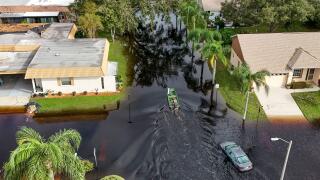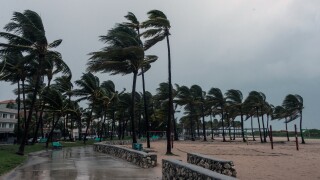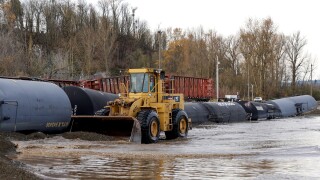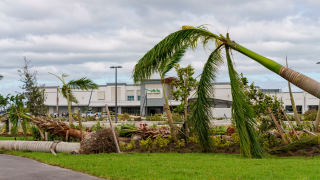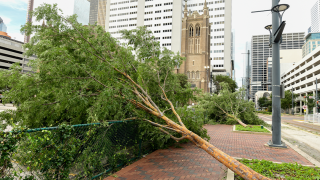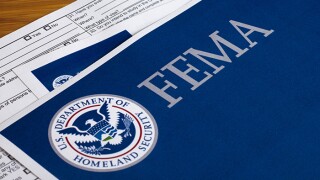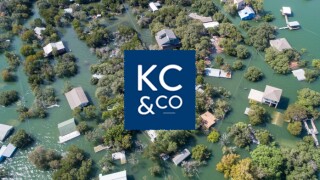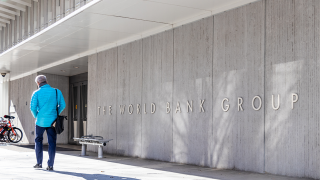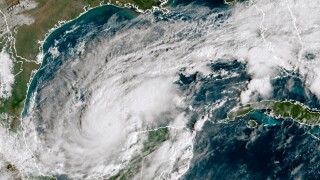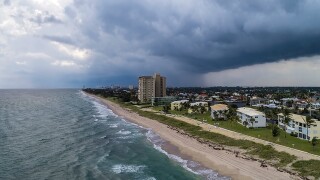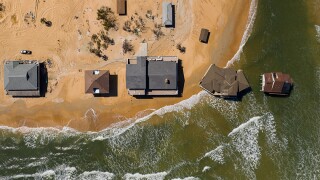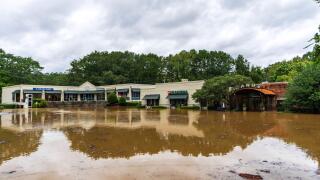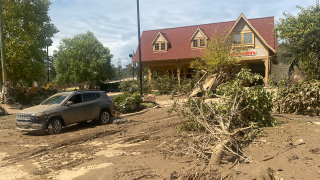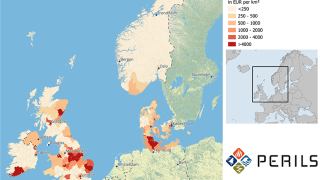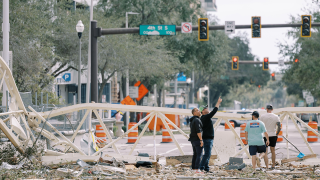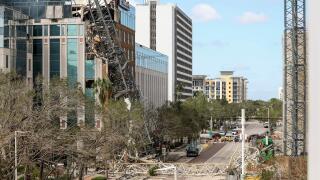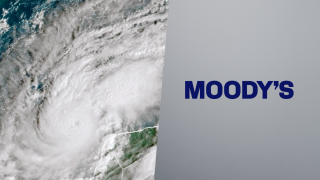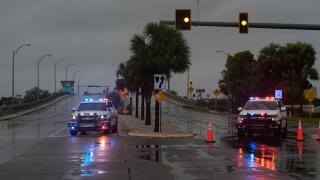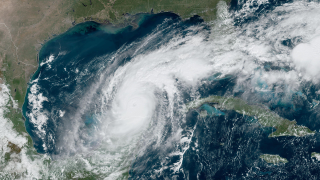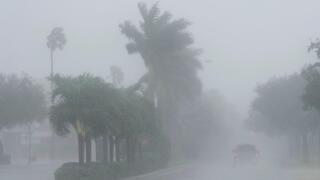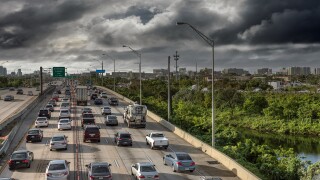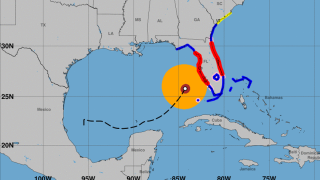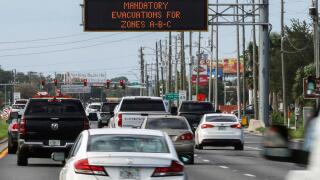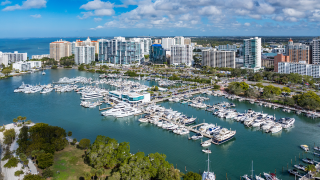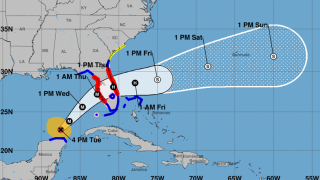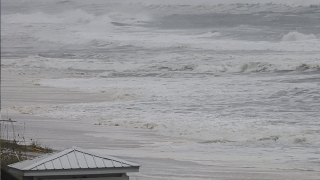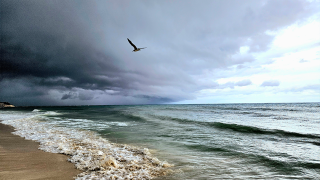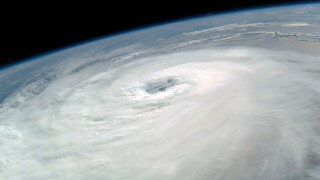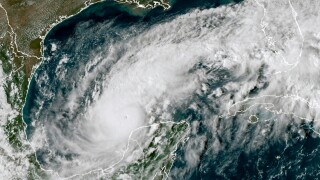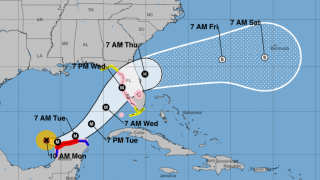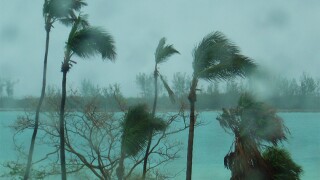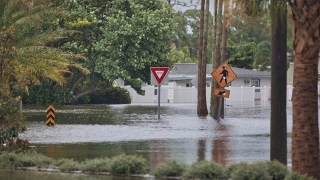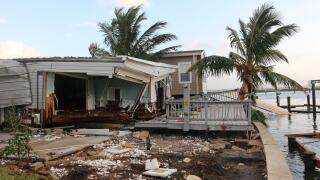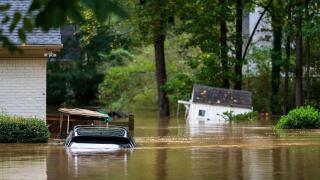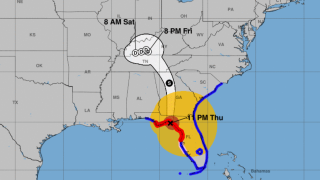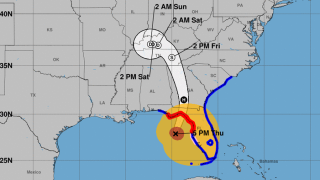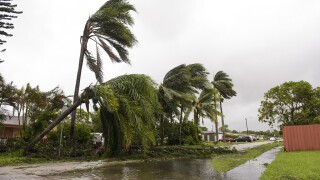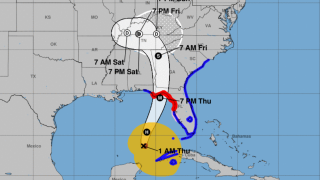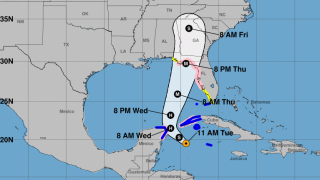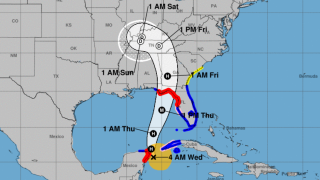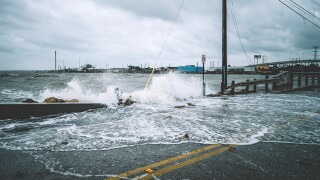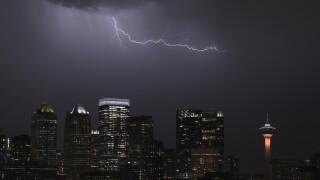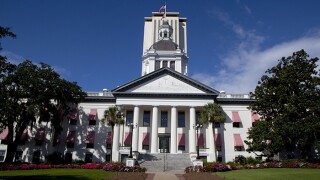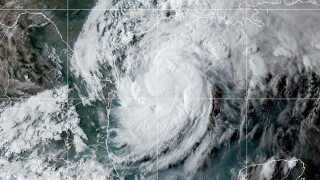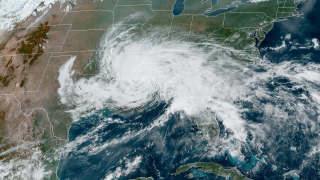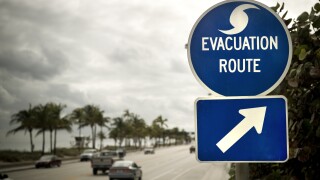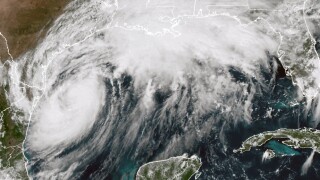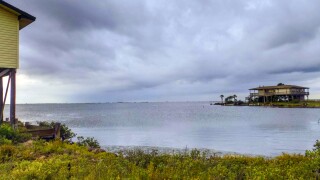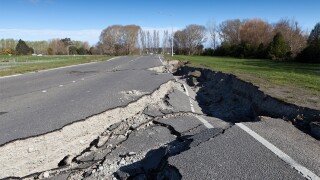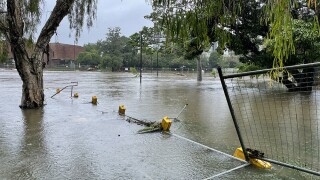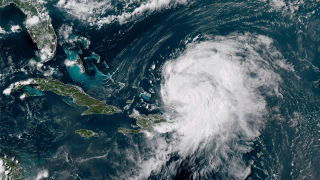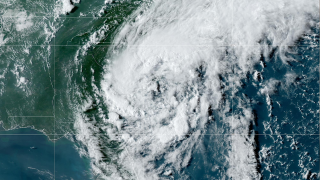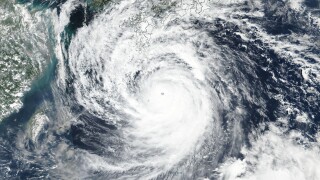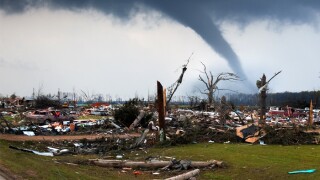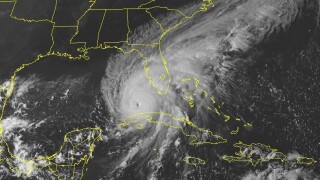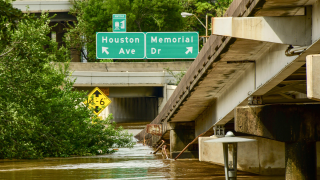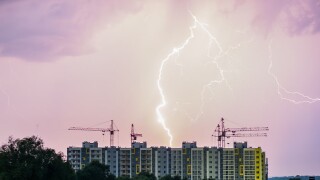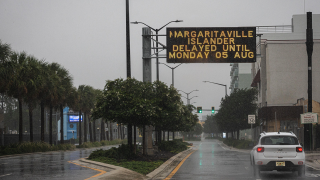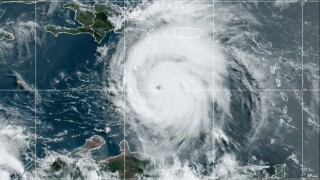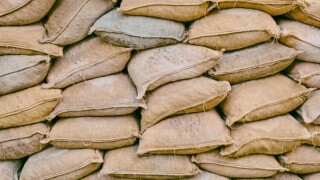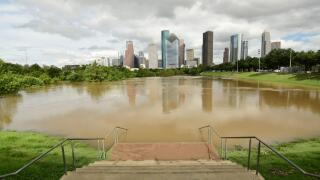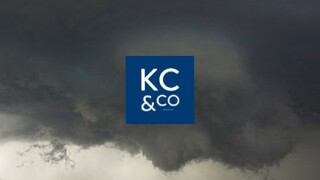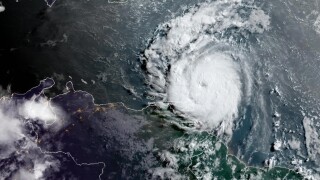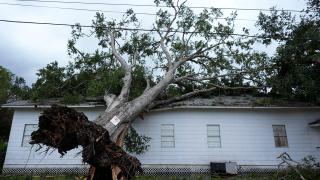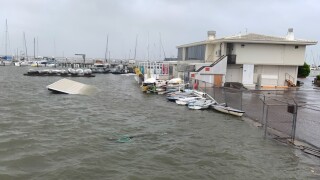-
Los Angeles wildfires and SCS pushed US losses to $89bn.
-
The storm outbreak follows similar events in the area in 2020 and 2023.
-
The outlook flags “large uncertainties” amid possible El Niño through summer 2026.
-
The firm’s external AuM has grown by 175% from 2019 to $3.3bn in 2025.
-
Secondary market pricing implies the sponsor could recoup a total of $50mn on the 2022-1 A note.
-
An “extraordinary” proportion of storms reached Category 5 status this year.
-
The peril has been historically difficult to model compared to others.
-
Insurers with SCS exposure reaped fewer benefits but still improved over Q3 2024.
-
The shuttering of Munich Re Ventures reflected a focus on the reinsurer’s “core offering”.
-
The (re)insurer has a higher-than-average Jamaican market share.
-
The largest net individual loss was January’s California wildfires at EUR615mn.
-
Insurance penetration varies, but hotels have “near-total” coverage and strong limits.
-
The storm devastated Jamaica and Cuba, but insurance penetration on the islands is low.
-
Widespread underinsurance and low exposures will limit losses.
-
Since 2007, the Caribbean country has received $100.9mn in payments from the CCRIF.
-
Many commercial risks will have London coverage, but insured values are relatively low.
-
Hurricane warnings are in place for Guantanamo, Holguin and Las Tunas.
-
Economic losses from the Cat 5 storm could run 30%-250% of the country’s GDP.
-
Central pressure of 900mb or below would trigger a full loss of the $150mn deal.
-
A US landfall is not expected, but the storm could hit the Bahamas by Friday.
-
Pricing on Friday implied a potential $45mn loss to the bond, before the storm outlook deteriorated.
-
The storm could bring flooding to Jamaica, Cuba and Haiti.
-
Nine-month insured losses still exceeded $100bn due to California wildfires.
-
The reinsurer stressed it “did not shy” from cat business in 2023.
-
Jonathan Rinderknecht was arrested Tuesday on destruction of property charges.
-
Winds have strengthened to 80 mph, and the hurricane is expected to intensify further over the next 48 hours.
-
The tropical cyclone is expected to be named Imelda.
-
Equivalent to a Category 5 hurricane, Ragasa is the world's strongest storm this year.
-
Despite the formation of Gabrielle, there is "a very high probability" of a below-average season.
-
The major storm is set to move on to mainland China later in the week.
-
The economic loss from the event was around EUR7.6bn.
-
The measures also seek to encourage greater wildfire mitigation efforts.
-
Losses were primarily driven by personal property lines.
-
The sponsor extended two notes issued in 2022.
-
The volume of property cat aggregates placed grew 50% in 2025.
-
The data modeling firm said losses previously averaged $132bn annually.
-
The ratings agency warned negative PYD on US casualty will likely continue.
-
After the LA wildfires in Q1, carriers got some relief in Q2 ahead of wind season.
-
The firm has also updated the loss-calculation engines of existing Jeannie tools.
-
The group claims the White House is undermining disaster preparedness.
-
The US has been lucky over recent decades to avoid a $100bn insured hurricane event.
-
The estimate covers property and vehicle claims.
-
The firm booked net losses from the LA wildfires of EUR615.1mn in the first half.
-
ILS investors have fought shy of multi-peril aggs due to low confidence in SCS modelling.
-
Both organisations still predict an above-average hurricane season.
-
The sidecar took $19mn of cat losses relating to the California wildfires.
-
The forecast has increased since the early July update due to several additional factors.
-
California wildfires account for $40bn of the insured loss tally in H1.
-
The model becomes the second in the state to get approval to affect ratemaking applications.
-
The firm attributed a 9% drop in reinsurance NWP partly to higher cession rates.
-
Millions are evacuating after one of the strongest earthquakes in modern history.
-
Mercury’s recovery from the guaranteed percentage of losses is $47mn.
-
Insured losses produced the second highest first-half tally since records began in 1980.
-
The figure updates an April estimate of EUR696mn.
-
The firm reported a net pre-tax cat loss of $414mn from January’s LA wildfires.
-
The losses were below May’s $777mn, but almost 3x higher than for June 2024.
-
The suit claims billions of dollars are being illegally withheld.
-
The US accounted for 92% of all global insured losses for the period.
-
US events accounted for more than 90% of global insured losses.
-
State legislation has led to major strides in rate adequacy.
-
We discuss progress in collateral management with our Outstanding Contributor winner.
-
Category 4 and 5 storms could become more common and hit further north.
-
Despite predicting fewer hurricanes, the numbers are still above average.
-
The weather-modelling agency is predicting a below-normal season.
-
This comes in at the lower end of the initial spread guidance of 725-775 bps.
-
The investment consultancy said yields increased in Q2 by less than could have been expected.
-
Ex-Tropical Cyclone Alfred has been the costliest event, with A$1.36bn in losses.
-
The company said the reduction was due to years of steady improvements.
-
Allstate attributed the bulk of its losses to three major wind and hail events.
-
PCS's loss estimate for the March Missouri SCS pushed the bond beyond its exhaustion point.
-
The Californian insurer had a private deal, Randolph Re, that provided pure wildfire protection.
-
In April, the loss modeller pegged losses at A$2.57bn.
-
The loss has decreased by 0.3% since the company’s third assessment.
-
The number has expanded by around 40% from an earlier update, sources said.
-
The latest update brings the agency’s combined estimate for Milton and Helene to $32.4bn.
-
The executive has 15 years of experience in meteorology and cat analytics.
-
HCI secured three towers with $3.5bn in XoL coverage.
-
The $2.59bn renewal is up 45% from last year.
-
Up to nine million acres of US land are considered likely to burn.
-
Last week, TSR updated its forecast and is now predicting above-average storm activity.
-
Most of the losses are attributable to a supercell storm in Texas.
-
The company also has $100mn for US hurricane events.
-
The Floridian also secured $352mn of multi-year coverage extending to 2027.
-
Florida’s top regulator says he’s eyeing eventual tweaks to the state’s cat fund, too.
-
The deals covered Euro wind and Italy quake, Florida hurricane and a retro bond.
-
Almost 50,000 people have been forced to evacuate.
-
TSR previously predicted activity slightly below the 1995-2024 average.
-
SCS can no longer be considered a "secondary" peril for the US insurance market, Steve Bowen said.
-
The agency forecasts up to five major hurricanes and 19 named storms.
-
Two large storms hit the Midwest and Ohio Valley regions on 14-17 May and 18-20 May.
-
Tornadoes have killed at least 32 people in three states.
-
The targeted uplift comes after Mercury ceded nearly $1.3bn of wildfire losses to reinsurers in Q1.
-
The revision is significantly lower than the $4.5bn October estimate.
-
Wildfire losses from fronting and ILS activities were EUR438mn.
-
Tropical Cyclone Alfred and Queensland flooding brought thousands of claims.
-
Ark's combined ratio included 25 points of catastrophe losses in Q1.
-
CEO Thierry Léger expects overall P&C pricing to be “stable” through 2025.
-
The insurer has not decided whether to sell its Eaton subrogation rights.
-
The CEO said private ILS funds can generate additional returns of 10%-20%.
-
Richard Pennay also addressed the dip in cyber ILS activity.
-
Private ILS would benefit from extension spreads to manage investor concerns, the CEO argued.
-
All 29 funds tracked by the index returned a positive performance.
-
Growing economic and population exposures are driving potentially larger insured losses.
-
Six weeks after the storm, Perils released its first industry-loss estimate at EUR619mn.
-
January’s California wildfires meant third-party investors suffered a loss of $195.3mn.
-
The storm made landfall in Queensland, Australia at the beginning of March.
-
SCS losses were also above average in Q1 due to “lingering” La Niña conditions.
-
The carrier surpassed the retention on its annual aggregate reinsurance cover for the year to March 31.
-
Insured losses were the second highest on record for the first quarter.
-
The industry loss data provider also increased its estimate for Hurricane Helene to $15.3bn.
-
KCC is part of the CDI’s review into creating a public wildfire cat model for insurers.
-
The sponsor is estimating a loss of ~$300mn in relation to one of last month’s US tornado events.
-
Despite wildfires, reinsurers are “well positioned to maintain strong profitability in 2025”.
-
The prediction comes after a highly active hurricane season in 2024.
-
Colorado State University is predicting 17 named storms, nine hurricanes and four major hurricanes.
-
Losses stemmed from ex-Tropical Cyclone Alfred and North Queensland flooding.
-
The carrier has received 12,300 claims as of 28 March.
-
The event has caused widespread damage in Bangkok, Thailand.
-
Cat losses last month were lighter than historical trends, but all eyes are on Q1 figures.
-
The March 13-16 storms would mark the first billion-dollar US SCS event of the year.
-
MAP’s Christopher Smelt said impact on nationwide programmes will cause risk aversion.
-
Both syndicates also reported a deterioration in their combined ratios.
-
Most of the industry losses occurred in Austria, the Czech Republic and Poland.
-
Sources warned some property XoL books are already running 50% loss ratios.
-
The cat bond manager warned of excess downside risk owing to an accumulation of losses.
-
The insurance industry has experienced mounting losses from severe convective storms.
-
Premiums ceded to the ILS vehicle increased by 76% to $433mn.
-
Commissioner Lara also proposed a $500mn cash infusion from parent State Farm.
-
Island appetite remains stable, but early 2025 loss activity has injected fresh uncertainty.
-
The largest individual net loss at EUR230mn was caused by Hurricane Milton.
-
The bond was trading at around 12.3c on the dollar in the secondary market last month.
-
“We do not have the luxury of time,” he said during the Bermuda Risk Summit.
-
Both carriers have extensive reinsurance coverage.
-
This came as the market’s underwriting profit dipped 10% for 2024.
-
Almost 300,000 people have been left without power from the storm.
-
This loss number covers the property line of business.
-
There is the potential for cat bond H1 issuance to be a record breaking six months.
-
As of 14 February, the company received 405 claims.
-
The London D&F market will shoulder most of the losses.
-
The reinsurer pegged the market loss at $40bn.
-
The carrier pegged its LA wildfire losses at EUR140mn.
-
Dispersion of returns was high, with the range 0.87% to -3.71%.
-
The programme structure was expanded, but it is unclear what percentage was placed.
-
The cost of reinstatement was included in $170mn wildfire net loss figure.
-
Climate change and other loss impacts were not adequately incorporated, sources said.
-
The CEO expects to see a larger shift between condos and apartments in 2026 and 2027.
-
HCI will now consist of two operating units – the other being its four underwriting entities.
-
ILS is delivering “a growing contribution” to the group, according to CEO Cloutier.
-
State Farm General has asked California regulators for an emergency rate increase.
-
There was a slight increase in DaVinci and Fontana from 31 December 2024 to 1 January 2025.
-
The firm reported record fee income of $128.2mn in 2024, up 26%.
-
Comments came as universal reported a 4.2 CoR jump to 107.9% in Q4.
-
Hurricane Milton accounted for 60% of the firm’s Q4 large loss tally.
-
The carrier expects the market loss to land at $35bn-40bn.
-
The carrier has paid $1.75bn on around 9,500 claims filed from the wildfires.
-
The conglomerate reported after-tax cat losses of $1.2bn related to Hurricanes Helene and Milton in 2024.
-
Several Florida start-ups are poised to begin writing business this year.
-
The carrier estimated January cat losses of $1.08bn, or $849mn after-tax, including the fires.
-
Wildfire loss ‘serves as a strong reminder not to unwind hard-fought for rates and terms’, the executive said.
-
Total combined losses for the agency’s Helene and Milton estimates stand at $31.8bn.
-
The carrier said 72% of those losses occurred in personal property.
-
A higher loss quantum will put a greater burden on retro programmes.
-
The estimate is net of its per-occurrence reinsurance program and gross of tax.
-
Insurers have paid $6.9bn in Southern California wildfire claims in the first four weeks of recovery.
-
The loss aggregator has classified the fires as two separate events for reinsurance purposes.
-
Wildfire is rarely singled out as an exposure that can shift portfolio outcomes.
-
The fall marks this the first time in 20 years the index has been negative in January.
-
More than 33,000 claims had been filed as of 5 February.
-
The firm will match segregated accounts of portfolios to investor mandates.
-
The carrier is “extremely well capitalised” to achieve its strategic ambitions.
-
The insurer disclosed the estimates as it seeks emergency rate hikes from regulators.
-
The company will ‘aggressively pursue subrogation’ for the Eaton Fire.
-
The LA fires ‘demonstrate the magnitude of tail events not well captured in modelling’.
-
Ultimate losses from the Palisades, Eaton and Hurst fires are estimated at $4bn.
-
The LA-based firm estimated gross cat losses in the range of $1.6bn-$2bn.
-
The role at PCS included acting as primary touchpoint for ILS.
-
The carrier’s reinsurance premiums ceded rose by 32% to $3.4bn in 2024.
-
CFP has a $900mn reinsurance attachment point and is still receiving claims daily.
-
The storm is likely to be one of the costliest weather events in Canadian history.
-
AuM remains generally flat at UCITS funds over the weeks since LA fires started.
-
FY24 disclosures show shifting fortunes at reinsurer ILS platforms.
-
Over 2024, four hurricanes added 13 points of cat-loss impact to the combined ratio.
-
But cat bonds are experiencing negative secondary market price movement.
-
The carrier is likely to exceed its Q1 large-loss budget due to the California wildfires.
-
The carrier disclosed it will book $1.1bn in net losses from the California fires.
-
The group ceded 55% more premium to Nephila over the year at $1.3bn.
-
The carrier has been reducing its presence in the state since 2007.
-
The carrier has recognised two separate losses for the Palisades and Eaton fires.
-
The company says the recent wildfires will be the costliest in its history.
-
Programs did not offer adequate risk-adjusted return.
-
Capital inflows, notably into UCITS funds, and accumulated returns supported issuance of $17.2bn in 2024.
-
The Bermudian’s wildfire loss estimate was based on an industry loss range of $35bn-$45bn.
-
A negative January return will be unprecedented for ILS industry.
-
The company’s reinsurance business also has some exposure, the executive said.
-
The index delivered a total return of 1.29% for the month of December.
-
The carrier has around $2.5bn-$4bn of reinsurance cover specifically for California risk.
-
Axis Capital’s fee income from strategic capital partners grew 39% to $85mn in the year to 31 December 2024, up from $61mn the year prior, the firm’s Q4 earnings release said.
-
The bond went on watch after Mercury said it would exceed its $150mn retention.
-
The Floridian also expects to report its “best earnings quarter” for Q4 2024.
-
Models will need to steepen the curve in the tail to reflect severe event frequency.
-
Non-proportional business accounted for 34% of its total.
-
-
The figure does not include specie or auto losses.
-
Secondary pricing on the carrier’s Topanga Re bond partly recovered following the guidance.
-
The carrier also has a $500mn excess $2.4bn aggregate protection.
-
The company received over 10,100 home and auto claims as of January 27.
-
Compared with its initial figure, CatIQ’s latest estimate has increased by 40%.
-
Secondary market pricing indicated anticipated California wildfire losses.
-
Guy Carpenter said personal lines exposure would account for 85% of the aggregate loss.
-
Fitch said 1Q wildfire losses could add 6% to 10% to Mercury’s CoR.
-
The industry loss number has increased threefold from an initial $5bn pick.
-
The total includes fire and smoke damage plus living expenses for evacuees.
-
The fire started Wednesday morning and is currently 0% contained.
-
Total economic losses were $368bn, 14% above the 21st century average.
-
The carrier’s Milton loss came in below expectations, but its fire claims will be “material” in Q1.
-
Losses from the larger fire will amount to $20bn-$25bn, the modeller said.
-
Most carriers paid more in homeowners’ claims than they collected in premiums.
-
Severe convective storms accounted for 41% of last year’s insured loss load.
-
Two 2021 worldwide aggregate ILW notes are also among the markdowns.
-
The carrier can claim separately for the Palisades and Eaton fires if necessary.
-
The carrier has received more than 3,600 claims from LA wildfires.
-
There are many unknown factors including insurance gaps, high-value property and damage to critical infrastructure.
-
The estimate has reduced slightly since the modeler’s last update in October.
-
The fund returned 15.69% in calendar year 2024.
-
The anticipated portion ceded to reinsurance may reach the mid-to-high single-digit billions, it added.
-
This will be the most expensive fire in the state’s history, it said.
-
A $30bn industry loss would use one-third of Big Four’s 2025 cat budgets.
-
ILS managers expect the losses to have some impact on future cat bond spreads.
-
The reinsurance attaches at $7bn, unchanged for the past two years.
-
Sources say the Fair Plan is under-reserved, leading to the possibility of member assessment.
-
The carrier is the largest writer of homeowners’ multi-peril in the state.
-
CEO Cerio highlighted changes that allowed the insurer of last resort to combine commercial, coastal and personal lines.
-
As fires still rage, many fear early $10bn-$20bn estimates were too optimistic.
-
The 2024 loss figure exceeded that of the previous record of C$6.2bn in 2016.
-
The Palisades fire is estimated at $9bn-$12bn, while Eaton is $6bn-$8bn.
-
The index’s performance in November was stronger than the prior year, although YTD returns are behind 2023.
-
Utilities have faced major liabilities for their involvement in starting wildfires.
-
Investigators are homing in on the likely causes of the incidents.
-
The number of structures damaged may put the event on par with the fires of 2017 and 2018.
-
The company’s stock price has plummeted in the wake of the LA wildfires.
-
Sources say 2025 could be as costly for wildfires as the $20bn-loss years of 2017-18.
-
Total economic and insured losses are “virtually certain” to reach into the billions.
-
AM Best said it expects insured losses from the California wildfires to be “significant”.
-
This could see it surpass the 2017 Camp Fire, which cost around $12.2bn.
-
Plenum said impact is marginal because wildfire contributes only marginally to the risk of bonds.
-
Moody’s also expects losses in the billions of dollars.
-
Six wildfires are now burning in SoCal, with the Palisades fire being the largest.
-
Six fires now cover more than 27,000 acres across Southern California.
-
Hurricane Milton resulted in the largest insured loss of the year at $25bn.
-
The fast-moving blazes have prompted evacuations across the city.
-
More than 4,000 acres are burning as thousands evacuate.
-
The new agreement provides $40mn of aggregate limit excess of zero.
-
The multi-day weather outbreak caused widespread damage from Texas to the Carolinas.
-
The largest non-US event in 2024 was the catastrophic flooding in Valencia.
-
Cat bonds were a key supply-side driver at 1 January 2025.
-
The UCITS cat bond segment has added 54% in AuM since Hurricane Ian.
-
Homeowners’ insurance rates have spiked almost 60% since 2018.
-
Casualty ILS made inroads, while hurricane hedging strategies came into focus.
-
The storms struck Victoria, New South Wales and Queensland.
-
Most of the industry losses occurred in Austria, the Czech Republic and Poland.
-
The company no longer has any exposure to reinsurance contracts.
-
The regulations are part of a state effort to expand wildfire coverage.
-
Overall, reinsurers accepted that rate cuts were still leaving them with strong margins.
-
The reinsurer said investors were interested in expanding after benefiting from good results.
-
The bond will provide multi-peril coverage in the US and District of Columbia.
-
TSR anticipates that next year will see an ACE value of 129 compared with the 30-year norm of 122.
-
The state reinsurer of last resort discussed options for 2025 reinsurance buying strategy.
-
Former ILS investors who left the space have looked again and re-allocated.
-
Losses are concentrated in the states of Baden-Wuerttemberg and Bavaria.
-
It estimated insured losses from nat cats on track to exceed $135bn in 2024.
-
The carrier attributed the intensification of storms this season to climate change.
-
Lloyd’s has taken around 6% of aggregate US hurricane losses in recent years, and disclosed estimated net losses from Helene and Milton of $1.8bn to $3.4bn.
-
Losses from Hurricane Milton are expected to affect only select junior structures.
-
The 2024 hurricane season stayed within predictions for high activity but lacked market-moving events.
-
The Class B notes on the carrier’s debut deal attach at $500mn of losses.
-
Euler ILS Partners and Tropical Storm Risk teamed up to produce an updated version of an earlier study.
-
The bond is split into three tranches of notes.
-
The loss figure has increased 200% from the initial number provided in October.
-
Moderate impacts to ILS returns are anticipated from Hurricane Milton.
-
The association’s Hurricane Beryl net loss stood at $455mn as of 30 September.
-
The estimate includes $102mn from Milton and $114mn Helene development.
-
It is targeting $25mn GWP this year and $50mn GWP in 2025.
-
The floods add to an already historic loss tally for Canada in 2024.
-
Helene losses were spread wider than initially suggested, in contrast to Milton claims.
-
The ILS unit’s AuM was higher by $100mn compared to $1.9bn as of 30 June.
-
Twia’s SCS losses in Q1-Q3 2024 have been more than double the budgeted amount.
-
The reinsurer took $743mn of nat-cat losses in the quarter.
-
The firm recorded a 13.3% nat cat impact to the P&C combined ratio.
-
Fema's traditional reinsurance programme will attach at losses of $7bn and above.
-
The model factors in the effects of climate change to date.
-
A total of $2.1bn in Fema money has been approved for the state.
-
The reinsurer confirmed its intention to reduce the K-Cession sidecar for 2025.
-
The failure of a Jamaica bond to pay out following Hurricane Beryl damage has brought focus onto the deals.
-
The Florida carrier reported a 103.5% combined ratio in Q3.
-
In other property, Helene and Milton will assure rates remain attractive, he added.
-
The carrier said it expected its Milton losses to fall below its EUR500mn ($537mn) Helene loss.
-
Only around EUR70mn-EUR140mn will fall to private insurers.
-
The firm’s AuM in four key vehicles rose $526mn in Q3.
-
The firm sees a "robust" pipeline of potential investors ahead of the renewals.
-
The Floridian also announced the completion of its first-ever takeout from Florida Citizens.
-
Ceded losses grew by 69.2% in Q3 from the prior year quarter to $44mn.
-
The combined ratio included 17 points of catastrophe losses in the third quarter.
-
CEO Adrian Cox said Beazley’s recent $290mn ILW purchase was not driven by “capital flexibility in and of itself”.
-
Most of the losses derive from France.
-
Latest pricing suggests secondary market traders are baking in further loss development.
-
The firm will provide an update on 22 November to avoid holiday season.
-
September was the strongest performing month since the index began in 2006.
-
The low PCS number is presenting a challenge for ILW buyers and sellers.
-
The firm is also integrating changes to its process to allow it to cover wider ground.
-
The commercial carrier also reported a Hurricane Milton pre-tax net loss forecast of $250mn-$300mn.
-
The estimate implies a roughly $15bn homeowners’ industry loss from the hurricane.
-
Andrade flagged expected 5% to 10% increases in the US and Europe.
-
The figures imply first-layer reinsurance recoveries for Helene.
-
The company’s reinsurance premiums ceded fell by 58% to $149mn.
-
The NFIP’s traditional reinsurance coverage kicks in at $7bn of losses.
-
The loss tally is considerably lower than estimates issued by model vendors.
-
Insured losses for 9M 2024 have hit $102bn, according to a report.
-
Liberty Mutual expects $550mn in Helene losses versus Milton’s $250mn-$350mn.
-
The carrier’s estimated pre-tax losses from Milton are $65mn to $110mn.
-
The cyclone pool received $479mn in GWP in the year to 30 June 2024.
-
The carrier is looking at a $600-$900mn hit from Debby, Helene, Milton.
-
Pricing is expected to “stay neutral of soften” for January renewals.
-
The Floridian anticipates Hurricanes Debby and Helene to incur losses of $3.8mn in Q3 2024.
-
The firm still expects to deliver positive net income for Q3 2024.
-
Assuming Munich Re takes roughly a 3% market share of hurricane losses suggests a ~$20bn industry loss for Helene.
-
As a result of mostly flooding, £495mn ($644mn) of losses occurred in the UK.
-
Managers expect Hurricane Milton losses to shore up pricing.
-
Many in the ILS sector are bullish on Milton losses falling at the lower end of earnings impacts.
-
Losses from the hurricane may not significantly impact on many funds’ annual returns.
-
Earlier this week, RMS estimated insured losses for Helene and Milton at $35bn-$55bn.
-
Florida domestics, aggregate retro and flood deals were all marked down.
-
The catastrophe loss estimate for September totalled $889mn, pre-tax.
-
HCI is estimated to incur a net expense of $125mn for Milton in Q4 2024.
-
Most of the insured loss was attributable to wind.
-
Icosa said certain cat bonds could see more than 0.2 points of price movement.
-
Twia filed for the rate hike in August after an actuarial analysis showed that rates were inadequate.
-
The company incurred $563mn of total cat losses related to the storm.
-
The bulls expect around $20bn-$30bn in Milton losses, with the bears anticipating $40bn-$50bn.
-
The estimate includes private cover for residential, commercial and industrial property.
-
RMS will issue its final loss estimates for Milton later this week.
-
Plenum said wind damage from Milton could lead to “moderate” losses for its cat-bond funds.
-
Hurricane Milton will show the ILS product behaving as investors expect it to.
-
The company is monitoring the NFIP’s flood-exposed bonds.
-
This is a far narrower drop than post Ian, when the index was lost 10%.
-
A client presentation from the broker put total insured losses at $25bn-$40bn, leaving the Citizens and the National Flood Insurance Programs clear of reinsurance impacts.
-
Milton made landfall near Siesta Key yesterday, leaving 2.7 million homes without power.
-
Losses to the NFIP-sponsored cat bonds remains a key area of uncertainty, the investment manager reported.
-
A $40bn Milton loss should barely dent many ILS returns but will trap some capital.
-
On Wednesday, the model had suggested a mean figure at $25.3bn.
-
The hurricane is likely to prevent rate reductions in property cat in 2025.
-
The event has spared (re)insurers the more extreme scenarios that were under discussion earlier this week.
-
Milton made landfall south of Tampa Bay at Category 3 on Wednesday night.
-
This is based on insured loss estimates of between $20bn and $60bn.
-
The pre-landfall figures are not an official loss estimate from the modeller.
-
The hurricane has destroyed hundreds of homes and left more than 2.7 million homes without power in Florida.
-
Milton’s center is projected to make landfall near or just south of Tampa Bay.
-
Integrity Re 2024-D and Lightning Re 2023-1A are two bonds that were marked down, although no trading has occurred.
-
The NHC storm track predicts landfall below Sarasota, south of Tampa Bay.
-
Hurricane Milton’s overall impact, based on the current pre-landfall scenario, could lead to “moderate losses” for Plenum’s funds.
-
Collateralised reinsurance and retro are in the firing line.
-
The government-backed scheme has greater take-up in areas in Milton’s path.
-
Restrengthening to Category 5 is still possible, Siffert warns.
-
Earlier this week, Moody’s RMS Event Response estimated the event would cost $8bn-$14bn.
-
Prior forecasts indicated a more northward track towards Tampa Bay and St Petersburg.
-
The storm is now predicted to make landfall south of Tampa Bay.
-
The NHC is predicting storm surge, exacerbated by the tide, as high as 15 ft for Tampa Bay.
-
The Mexican cat bond offers $125mn of protection against Atlantic named storms.
-
A hurricane warning has been issued for the east coast of Florida.
-
Most sources noted expectations of a $50bn+ event, but the range of outcomes is huge.
-
Hurricane Milton strengthened from a tropical storm on Sunday to a Category 5 storm yesterday.
-
Destructive storm surge is expected along Florida’s West Coast on Wednesday.
-
The panelists discussed the ILS reset and the path to maintaining discipline in this sector.
-
Moody’s also predicts losses to the NFIP at potentially more than $2bn.
-
The storm is packing maximum sustained winds of 175mph.
-
Milton is expected to move north of the Yucatan Peninsula today and cross the eastern Gulf of Mexico by Wednesday.
-
Parts of the Yucatan peninsula are under a hurricane warning, though the storm is expected to remain offshore.
-
The NFIP’s losses are estimated at $4.5bn-$6.5bn.
-
Experts have raised concerns over significant rainfall, record-setting storm surge and lingering Hurricane Helene debris.
-
The “exceptionally large and powerful” Category 4 storm made landfall in Florida last month.
-
Rising sea levels and ocean warming were likely factors in Helene’s strength.
-
The figure does not include NFIP losses.
-
Most of the estimated insured losses will be retained by insurers.
-
The loss estimate covers Czechia, Poland and Austria.
-
Key floods this year outside of the US include the Rio Grande do Sul.
-
The biggest limitation to growth is supply, given ILS capital “reticence” after the 2016-22 years.
-
Praedicat CEO Bob Reville outlined the firm’s approach to "casualty cat" as liability risk modeling continues to mature.
-
The numbers will be refined further to arrive at an industry loss estimate.
-
Moody’s described Hurricane Helene as “like Idalia but worse”.
-
The storm made landfall as a major hurricane in Florida’s Big Bend region.
-
The ratings agency expects insured losses of around $5bn for Helene.
-
The manager is hopeful of closing all contracts by the end of 2024.
-
Tallahassee avoided a major hit – but flood and storm-surge losses remain unknown.
-
The NFIP has a higher take-up rate in Tampa Bay, which experienced record coastal storm surge.
-
Helene is expected to become a post-tropical low later today.
-
Aon estimated losses for the Czech Republic at EUR775mn, Austria EUR555mn, Poland EUR285mn and Slovakia EUR33mn.
-
More than one million Floridians are without power after the storm hit.
-
Additional strengthening is expected before Helene makes landfall in Florida tonight.
-
Only three storms have impacted a larger area than Helene since 1998.
-
An unexpected shift east towards Tampa could push losses beyond $10bn.
-
TSR predicts Atlanta, Georgia, could face Cat 1 windspeeds as the storm moves further inland.
-
The storm is expected to make landfall in Florida’s Big Bend coast on Thursday evening.
-
Helene is currently a Category 1, but rapid strengthening is anticipated over the next day.
-
The ILS manager expects “minimal, if any, losses” to bonds in its funds.
-
In the best-case scenario, a Big Bend-landing storm could cost $3bn-$5bn, Howden Re said.
-
A hurricane warning is in effect from the Anclote River to Mexico Beach, Florida.
-
A storm surge warning is in effect from Flamingo to Indian Pass.
-
The storm could become a major hurricane by Thursday.
-
July and August floods and fires caused the bulk of the insured loss burden.
-
Severe convective storms accounted for 60% of H1 global cat losses.
-
The system is forming in the same area as 2022’s Hurricane Ian.
-
The ETF format provides for publication of a daily NAV.
-
Fifteen events caused estimated losses of $306mn.
-
Floir approved nearly 650,000 policies for takeout from Citizens for October and November.
-
The broker replaces Goldman Sachs on the business after the bank ceased offering ILS services.
-
Moody’s also predicts losses to the NFIP at less than $200mn.
-
The effort will draw from California’s research and higher education communities.
-
The estimate is like others in the market, suggesting a relatively small loss from the event.
-
The hurricane has led to a “surge” in insurance claims related to floods, according to the IBC.
-
The ratings agency said companies focused on growing business in Gulf Coast states, however, would face a “key test” as claims materialised.
-
A sub-$3bn industry insured loss event would be similar to estimates for hurricanes Beryl and Debby.
-
Francine has been the eighth Category 2 or larger storm to make landfall in Louisiana since 2000.
-
The sponsor has kept $25mn of principal in extension for any further loss development.
-
The storm is expected to weaken to a post-tropical cyclone later tonight.
-
Kin’s reinsurance structuring means the bond’s losses will be kept to a minimum.
-
‘Life-threatening’ storm surge and hurricane-force winds expected for the state, according to the NHC.
-
Francine is expected to make landfall in Louisiana tomorrow.
-
The estimate from the Perils-owned company does not include any losses from Hurricane Debby.
-
A hurricane watch is now in effect for the Louisiana coastline.
-
Most of the ILS capital was attracted to the cat bond market.
-
Cat bond funds continue to draw interest as private ILS more challenged.
-
Some Canadian cedants have approached the market for top-up cover.
-
The loss has increased by 1.4% since the company’s first assessment.
-
The transaction complements its previous acquisition of RMS in 2021.
-
The broker said it expects strong ILS capital inflows to continue.
-
-
Urban expansion, climate change and inflation are key drivers of losses.
-
The rate change will be implemented in November.
-
The Insurance Bureau of Canada said the blaze damaged one-third of the Jasper community.
-
The P&C Re CoR came in at 84.5%, a 10.2-point YoY improvement.
-
The CEA has $326.4mn towards risk transfer, 44% below budget.
-
Leadenhall first filed its lawsuit against 777 Partners in May this year.
-
Data shows that nat cat losses in Canada have increased substantially this century.
-
Returns were down on 2023, which benefited from favourable Ian loss development.
-
The regulations have been officially published online, with a hearing to be held next month.
-
Rising premium income is not keeping pace with the increased cost of claims.
-
The storm made landfall on Saturday as a Category 1 hurricane.
-
Ernesto’s maximum sustained winds have reached 100 mph.
-
Total catastrophe losses stemmed from 20 events and were estimated at $587mn.
-
-
Flights cancelled as typhoon ramps up to Cat 4.
-
Ernesto is expected to track past Bermuda on Saturday with hurricane conditions.
-
Moody’s also predicts losses to the NFIP at less than $300mn.
-
The peril can no longer be considered secondary, according to Gallagher Re.
-
Both groups continue to call for a highly active season, however.
-
Several bonds suffered declines in value from February to July.
-
Debby should be a “very manageable” storm for the (re)insurance market, it said.
-
Subsidiaries Core and Typtap have applied to participate in the November Citizens policies assumption.
-
The storm brought a lot of rain, but the Floridian doesn’t provide flood insurance.
-
The loss is based on modelled outputs, as opposed to an initial loss estimate.
-
The board of directors has voted for a 10% rate hike.
-
Fee income at the Re & ILS division grew by 58% to $44.3mn in H1.
-
Severe thunderstorms, mainly in the US, accounted for 70% of insured losses globally.
-
Its forecast for intense hurricanes is unchanged at six.
-
The NHC has said there is potential for “historic heavy rainfall” across southeast Georgia and South Carolina.
-
It consisted of three major earthquakes within a nine-hour period on 6 February 2023.
-
Geico more than tripled underwriting profits.
-
The ‘life threatening’ hurricane has potential for “historic heavy rainfall” in the southeastern United States.
-
The broker said less than 1% of companies globally with cyber insurance were impacted.
-
The insurer said once firms give up lower attachments or aggregates they “simply do not get them back”.
-
Over 75% of insured losses attributable to severe thunderstorms, flooding and forest fires.
-
The firm also posted a 56% increase in fee income.
-
Losses from mid-sized nat cats added 9.9 points to the P&C combined ratio.
-
The firm said losses could fall under $300mn if more favourable assumptions were applied.
-
The property market remains “one of the most favorable ... I've seen in my career,” the executive said.
-
The event would represent a loss ratio impact of roughly 3%-10% on global cyber premiums of $15bn today.
-
The weighted average direct financial loss for a Fortune 500 firm was $44mn.
-
The current guidance is that Beazley will publish an undiscounted CoR in the low-80s at full year.
-
The carrier purchased an additional $150mn of cover.
-
The modeller said 3 million homes were without power at its peak.
-
The figure is well above the historical average of $39bn for this century.
-
Allstate’s total pre-tax cat losses for H1 2024 were $2.85bn versus an estimated $4.39bn in H1 2023.
-
Most of the losses occurred in Bavaria and Baden-Wuerttemberg.
-
The biggest losses were from wind damage after the storm’s Texas landfall.
-
Relentless focus on annual outcomes provides a packaging that doesn’t fit the purpose.
-
Uncertainty around the quantum remains due to policy deductible variation.
-
The insured loss from Beryl in the US was pegged at $2.7bn.
-
Industry losses of $800mn-$1.2bn are expected from Beryl's impact in Texas.
-
Hurricane Beryl was a “harbinger of a hyperactive season,” CSU said.
-
Chief science officer Steve Bowen said it was still too early to provide precise insured-loss estimates.
-
Secondary market activity and hedging would be likely if a Beryl-sized storm tracked toward the US.
-
Houston mayor John Whitmire said: “We woke up this morning on the dirty side of a dirty hurricane.”
-
Beryl has been downgraded to a tropical storm but is still life-threatening, with news media reporting two deaths so far.



